Climate change is here. It’s time Californians stopped clinging to the past
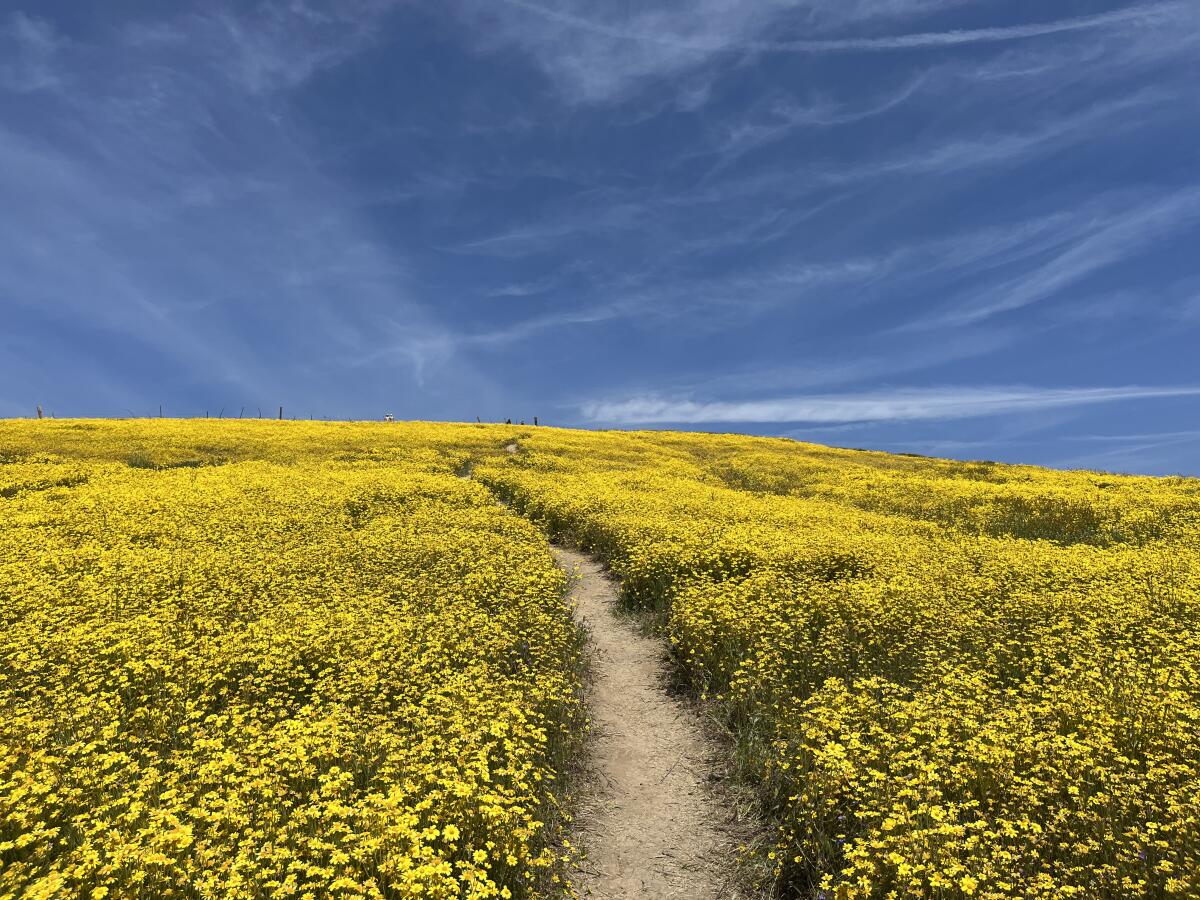
- Share via
This story originally published in Boiling Point, a weekly newsletter about climate change and the environment. Sign up here to get it in your inbox.
Life moves pretty fast. If you don’t stop and look around once in a while, you could miss it.
So says Matthew Broderick in “Ferris Bueller’s Day Off,” and he might as well be talking about California these days. As the planet continues to heat up, the state’s landscapes, watersheds and weather are shifting so fast it can be difficult to keep track.
Record snowfall in the Sierra Nevada, following years of drought. Superblooms so vast they can be seen from space. Hillsides so verdant they could fuel gigantic fires — and maybe rattlesnake bites — as spring turns to summer turns to fall.
I’ve been on the road the last few weeks, and I got to see many of those changes firsthand.
Let’s start with the snow. It’s truly mind-boggling.
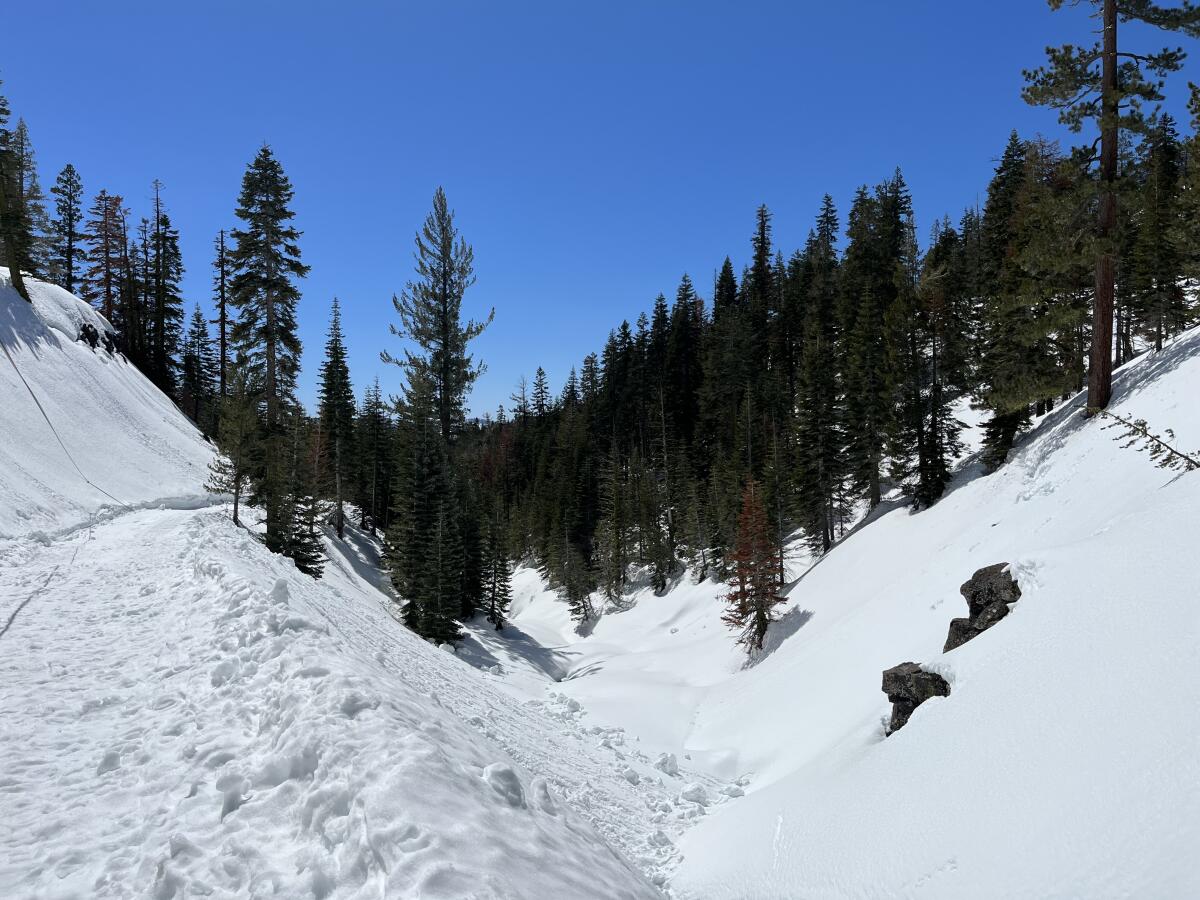
At Serene Lakes — just west of Donner Pass, off Interstate 80 in the northern Sierra — at least 15 feet of powder was piled up in mountain communities, blanketing rooftops and blocking doorways and already starting to melt. The dozens of feet of snow that have fallen in recent months are a boon to ski resorts, some of which expect to stay open into July.
Not having a lot of snow experience myself — or a pair of snowshoes — I kept taking bad steps and sinking into loose powder. Part of my mind was stuck on all the havoc this snow would wreak, a problem that will only get worse as planet-warming carbon pollution intensifies California’s traditional swings between dry and wet. As The Times’ Brennon Dixson wrote this week, there could be years of flooding in Central Valley towns as snowmelt courses down from the Sierra peaks.
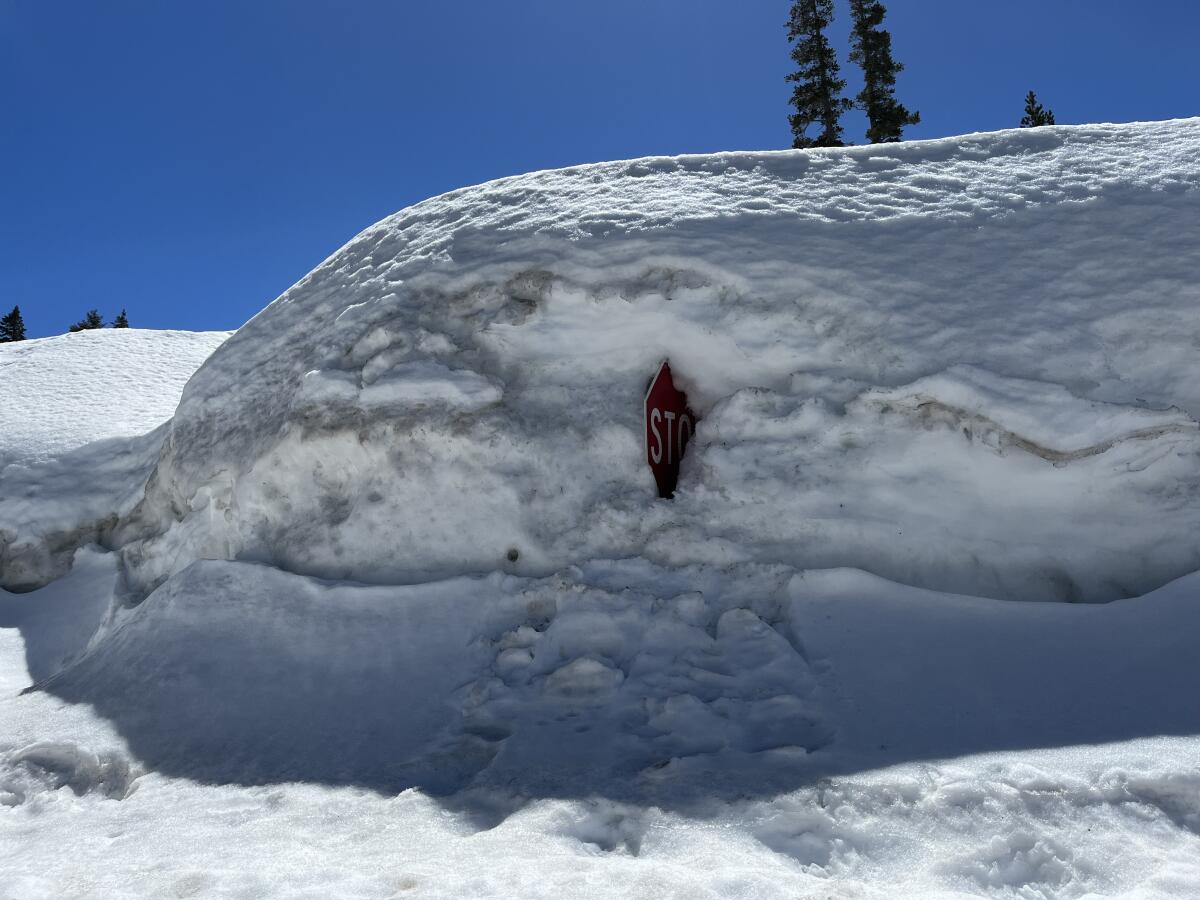
I was also cognizant of how much we’ll benefit from the snowmelt — not just for drinking water, but also through increased hydroelectricity production at dams, which should reduce the state’s reliance on fossil natural gas, at least in the short term.
If you’re a fan of whitewater, meanwhile, one of the best rafting years in recent memory is underway. My colleague Jack Dolan got in a boat on the Upper Kern River to navigate the exhilarating — and sometimes treacherous — whitewater rapids.
Good or bad, the snow was definitely beautiful.
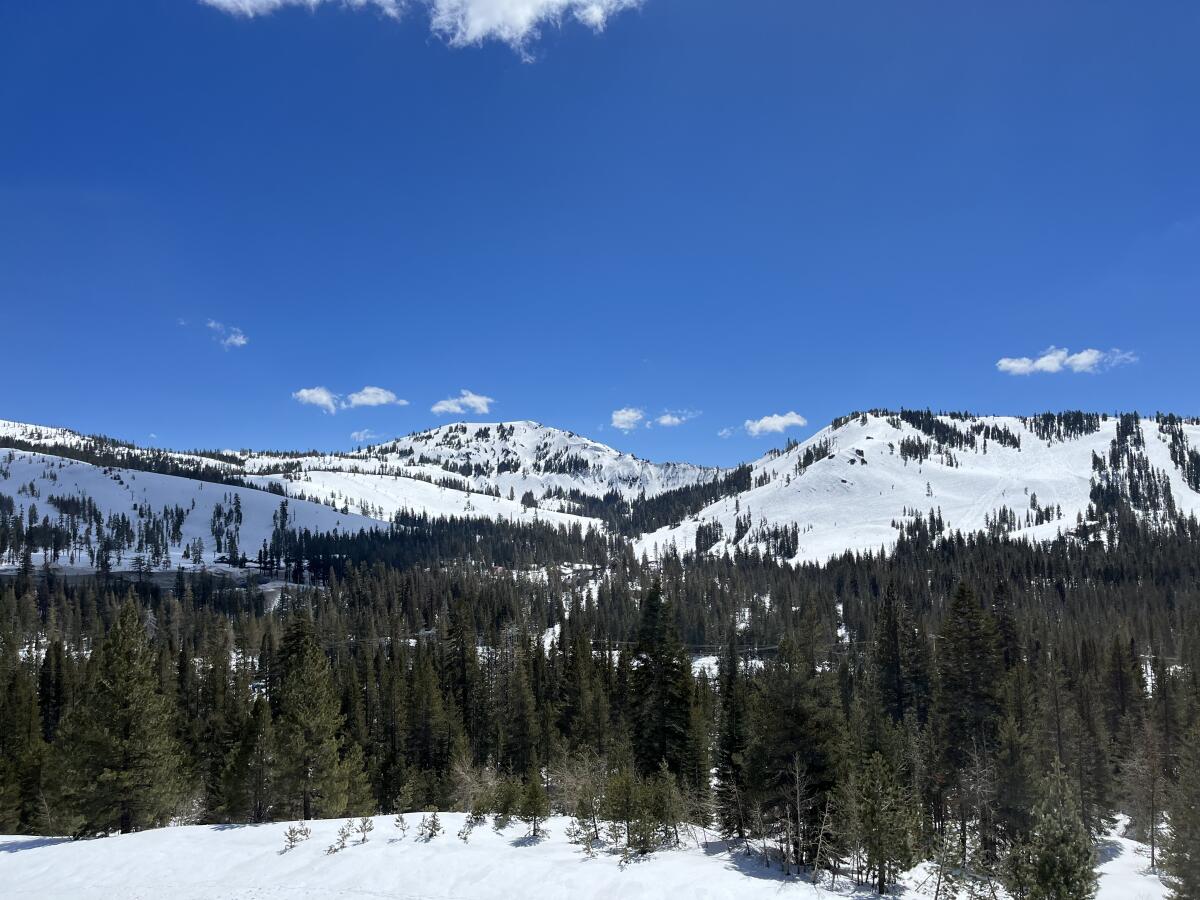
Not far from Donner Pass, Lake Tahoe was also looking mighty fine.
Despite living most of my life in California, I’d never been to Tahoe, which inspires the kind of reverence typically reserved for religious experiences. It took me all of two minutes to figure out why. The water was a spectacular blue, the shores ringed by snowy mountains. And at least on the weekday morning I was there, the loudest sounds were gentle waves.
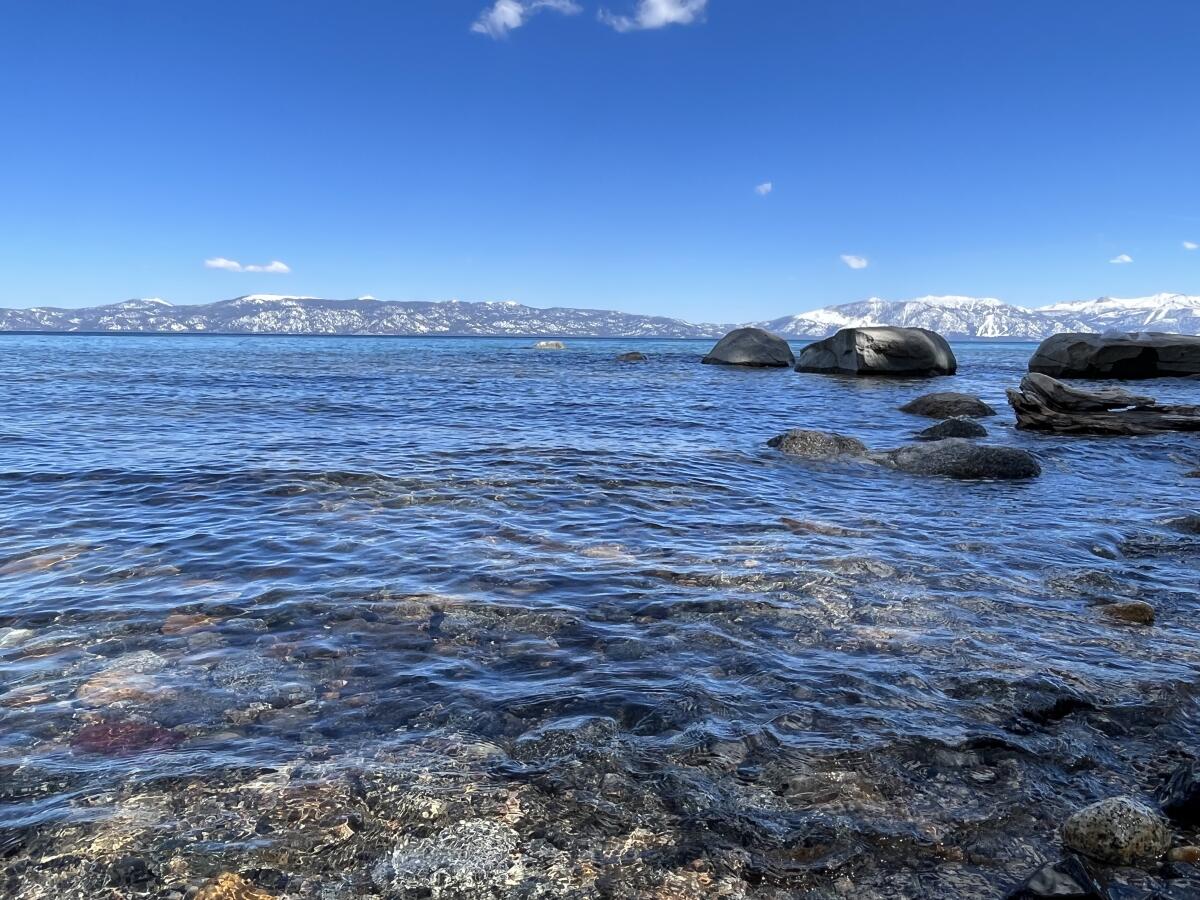
The water was also amazingly clear — clearer than it had been since the 1980s. As my colleague Rosanna Xia noted in last week’s Boiling Point newsletter, UC Davis scientists just reported that Tahoe’s waters were clear to a depth of 81 feet in 2022.
The world is changing fast. But it’s not all bad, all the time.
The next day, I hiked at Table Mountain — another reminder of the fine line between serenity and calamity.
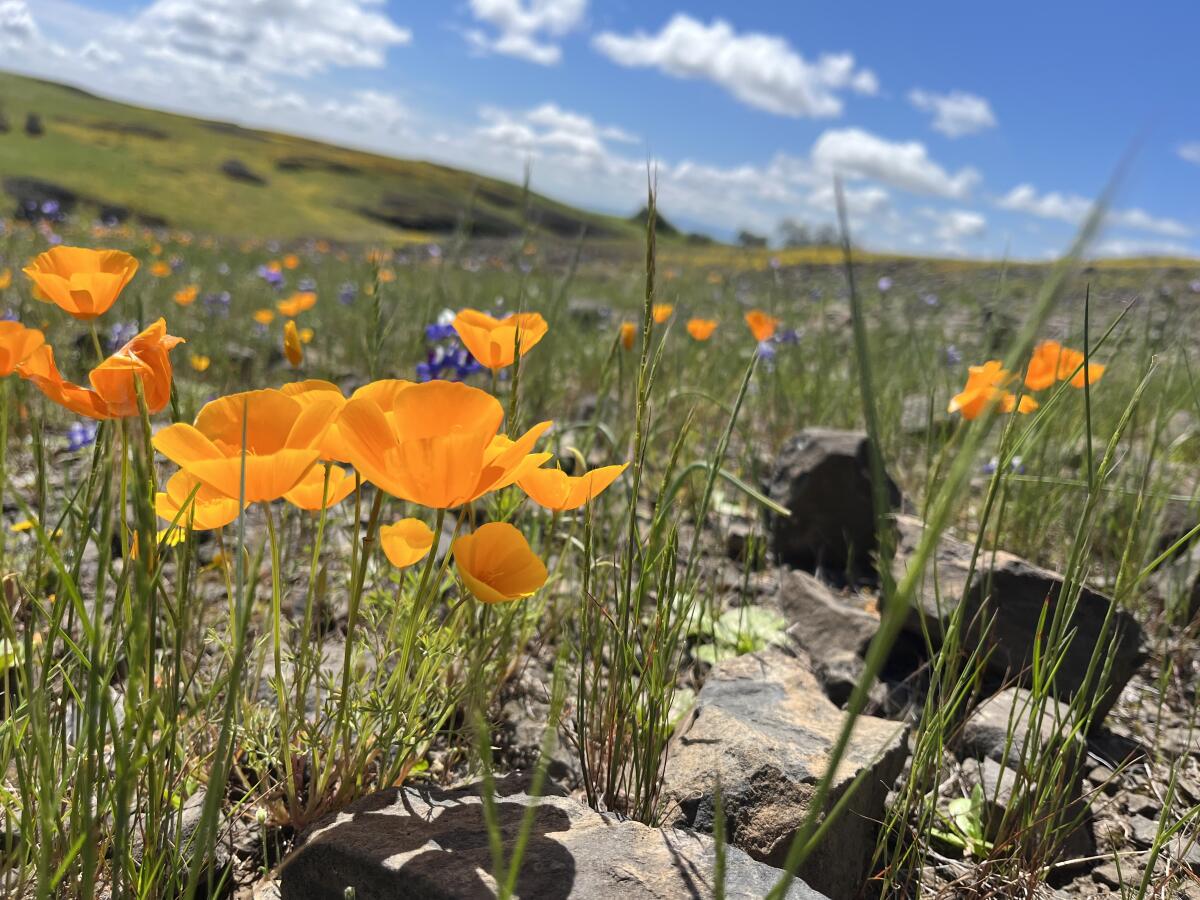
Colorful wildflowers dotted the ancient lava-flow landscape, with poppies, lupines and goldfields lining the trail to Phantom Falls, a gorgeous 166-foot waterfall flowing into Coal Canyon. The only discordant note was a dead cow stinking up the trail.
On the horizon, more serious disharmony lingered.
The 2018 Camp fire — which destroyed the town of Paradise — had raged not far from our trail. One of my companions pointed to a ridge that the flames torched, threatening but ultimately not reaching North Table Mountain Ecological Reserve.
We spotted another hiker wearing a “Paradise Strong” T-shirt — a local rallying cry in support of rebuilding the community.
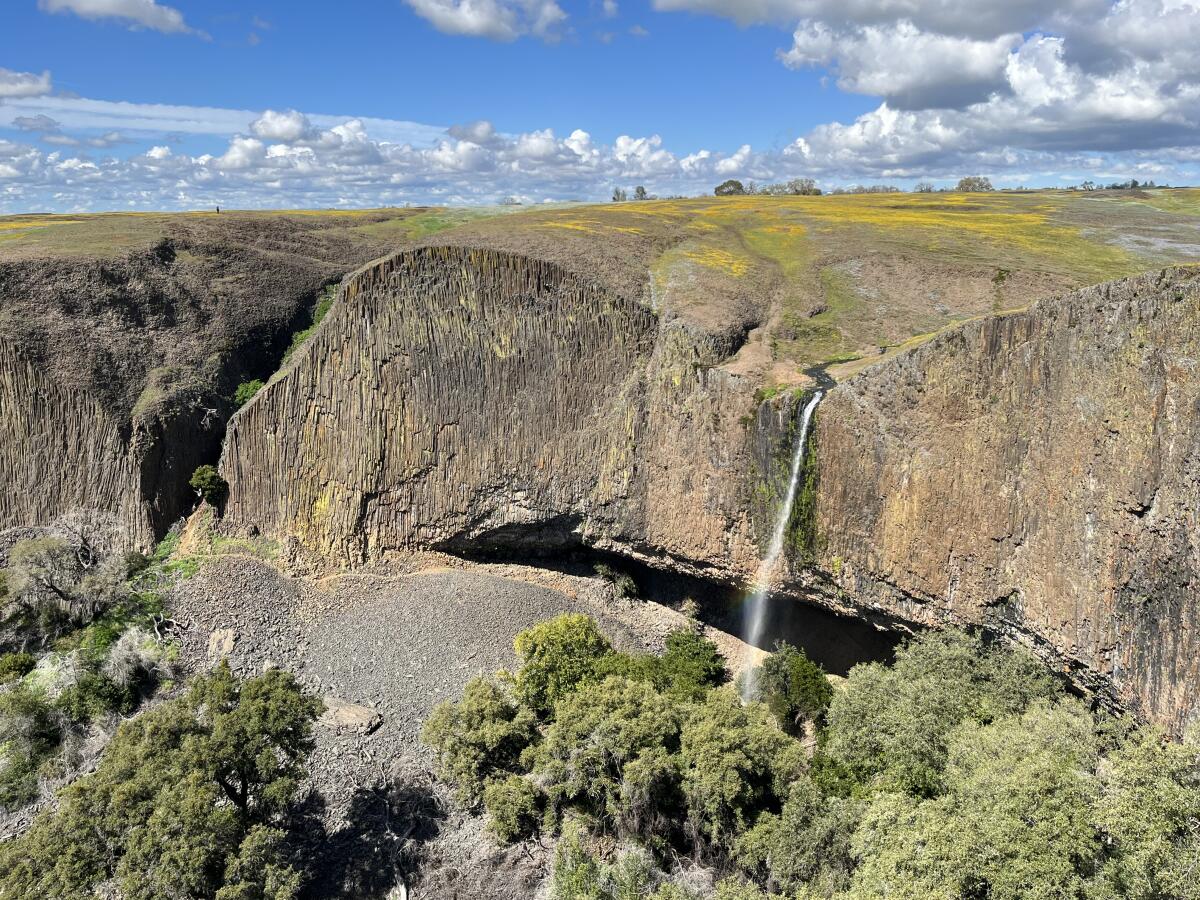
Does it make sense to rebuild mountain towns destroyed by flames, when they’ll only face greater risk of burning again as temperatures keep rising? As early as 1900 — long before climate change became a crisis — Theodore Roosevelt foresaw the danger of human development intruding on wildfire territory. “As railroads tend to encroach on the wilderness, the temptation to illegal hunting becomes greater, and the danger of forest fires increases,” the future president warned.
As a coastal city dweller, I don’t feel comfortable passing judgment on whether rural towns battered by climate disaster should be allowed to rebuild. But there’s a larger issue here, which is humanity’s habit of coping with change by clinging to the past.
There’s comfort in holding tight to the institutions and infrastructure that have served so many of us so well for so long — the water rights, the dams, the gas-fired power plants. But there’s also risk in it. The tree that doesn’t bend is liable to break.
Which isn’t to say that bending is easy.
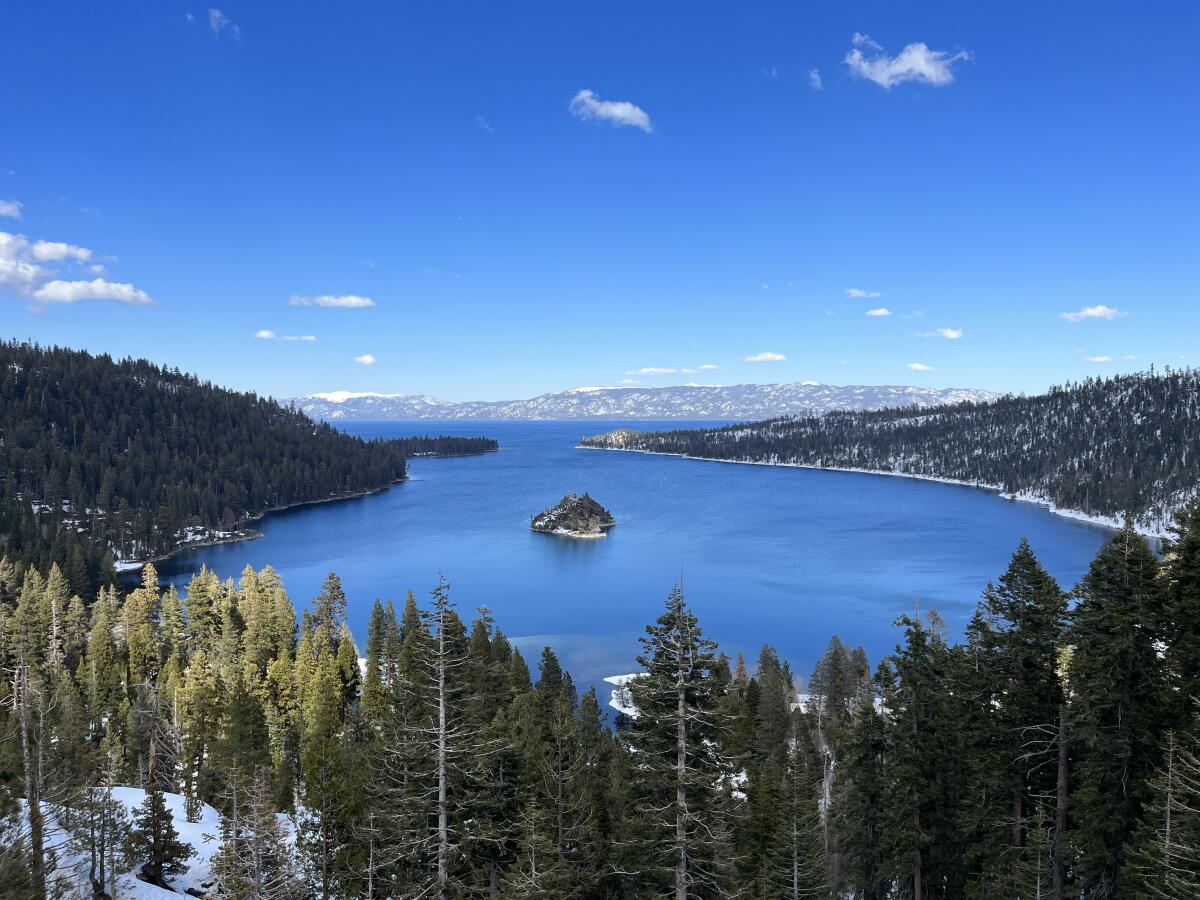
Leaving Table Mountain, we drove past Lake Oroville. It’s California’s second-largest reservoir, and it was 88% full after recent rains. Much farther south, on the Cuyama River, we got a look at Twitchell Reservoir — more than half full after nearly emptying out a few months ago. In Kern County, the highway ran across the California Aqueduct, which will carry all that Sierra snowmelt — the stuff I played in near Donner Pass — down to Los Angeles County, so I can brush my teeth and stay hydrated.
Our water systems have worked largely as intended for decades — but they weren’t built for the 21st century. What happens when drought returns? Will some dams become useless walls that block fish passage? Will enough Angelenos have torn out their lawns to make a serious dent in water demand? Will enough farmers have stopped growing alfalfa with Colorado River water?
And what about our energy systems? They’re already changing.
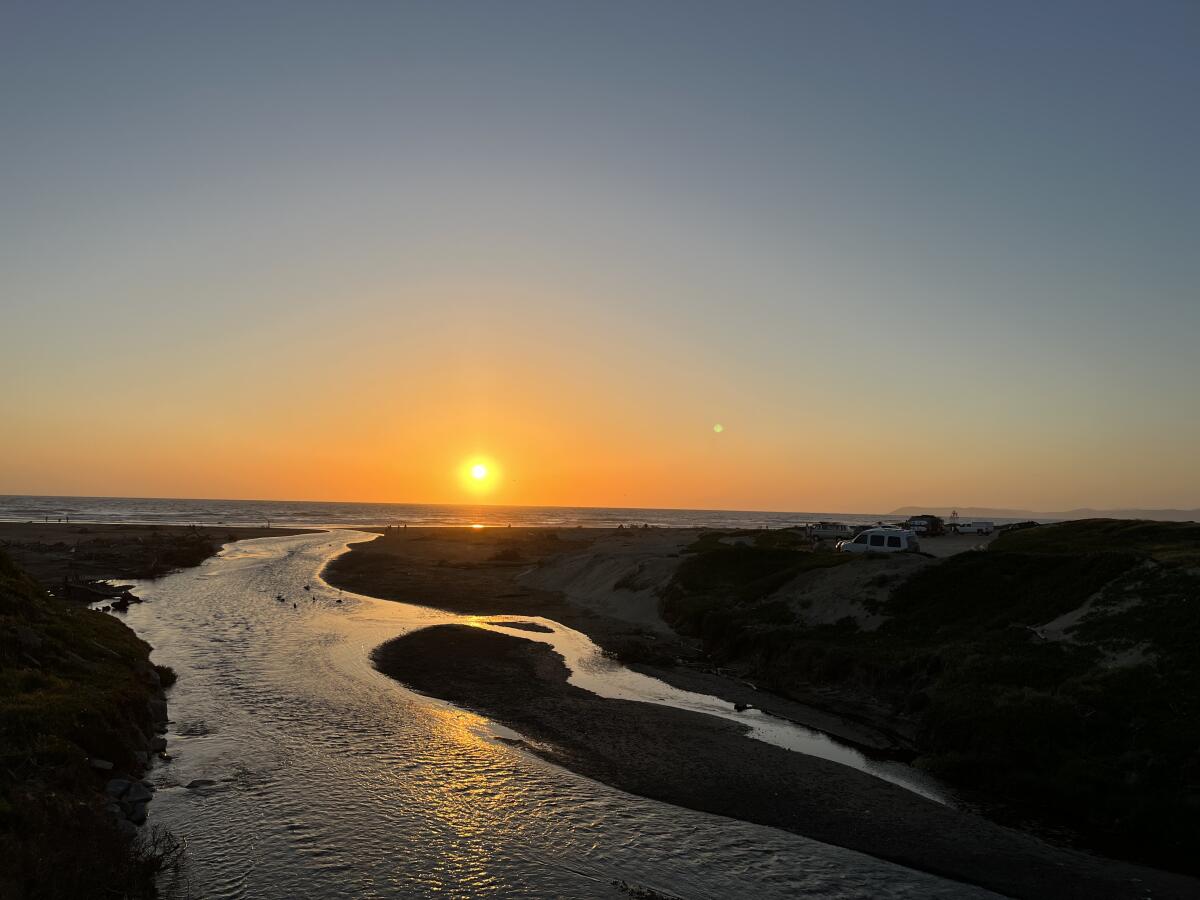
Driving along Highway 166 in the southern San Joaquin Valley, I saw pumpjacks bobbing up and down, pulling crude oil from the ground — and solar panels covering farmland. A few days earlier, on the Pacific Coast in Monterey, I’d gazed across the bay at the faint outline of smokestacks — part of a gas-plant site that’s also now home to the world’s largest lithium-ion batteries.
Further south along the Central Coast, in Morro Bay, I stared up at three smokestacks along the water, just before sunset. They were part of a gas-fired power plant that shut down nearly a decade ago, and they’re slated to be torn down themselves.
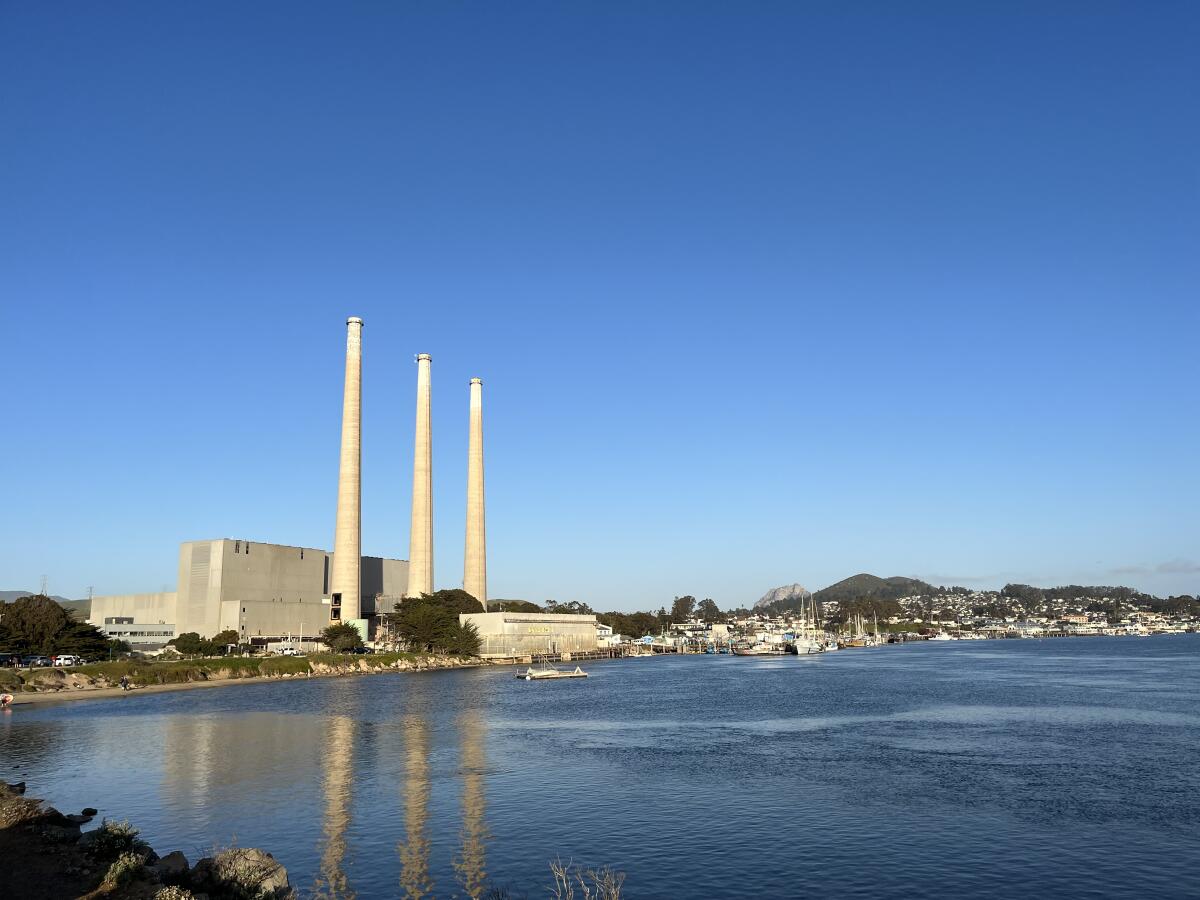
The towers are polluting relics from another era — except to some locals, who see them as “a cherished symbol of the town’s working-class ethos” and are heartbroken to see them toppled, as my colleague Hailey Branson-Potts has written.
Life moves pretty fast. Sometimes, you’ve got to cherish it. And sometimes, you’ve got to let it go.
My last stop before returning to Los Angeles was Carrizo Plain National Monument, about 30 miles west of where Interstate 5 emerges from the Grapevine. It’s the state’s largest remaining native grassland, and one of many superbloom hot spots.
I’d read there were so many wildflowers at Carrizo Plain following recent rains that you could see them in satellite photos.
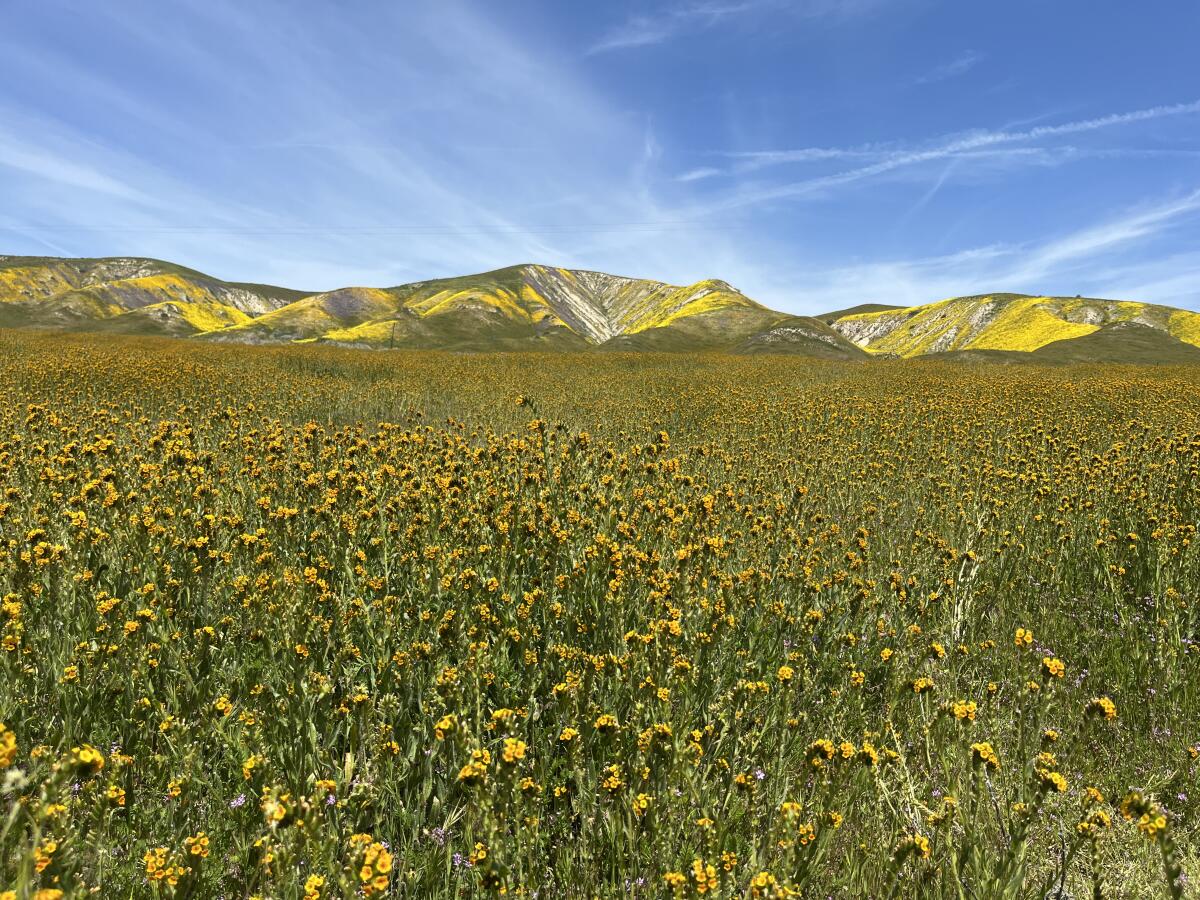
Suffice to say the national monument did not disappoint. The hillsides and valley floor were so densely packed with flowers that it looked like an artist had taken a paintbrush to Carrizo Plain, bathing the landscape in yellows and oranges and blues.
Not every spring will be like this. Let’s stop and look around while the looking is good.
On that note, here’s what’s happening around the West:
TOP STORIES
An appellate court has thrown out Berkeley’s first-in-the-nation ban on gas hookups in new homes and businesses, ruling it’s preempted by federal law. Here’s the story from my colleague Terry Castleman, who notes that the three-judge panel that heard the case included two Trump appointees and one Reagan appointee. It’s not yet clear how the ruling might affect dozens of other cities across the country — including Los Angeles — that have also banned or discouraged planet-warming natural gas in new construction in an effort to promote climate-friendly electric heaters and stoves. In better news for clean building advocates, billionaire investor and climate activist Tom Steyer has a plan to buy up apartments and industrial properties across the western U.S. and retrofit them for energy efficiency and install solar panels. Details here from Bloomberg’s Patrick Sisson.
California’s reservoirs are full — but that doesn’t mean much to residents of Tombstone Territory and other low-income Central Valley communities, some of whom continue to depend on water delivered by truck. The Times’ Ian James wrote about the nut farmers and other growers sucking up loads of groundwater and causing wells to run dry for hundreds of families. Some of those families are urging California officials to step in and stop the overpumping. “We really need the governor to come in here and implement a solution,” said Kyle Jones, policy and legal director for the Community Water Center.
Remember Kylie Jenner’s infamous 17-minute private jet flight from Camarillo to Van Nuys? The reality TV star would need to repeat it nearly 9,000 times to match the yearly climate pollution of Los Angeles city and county police helicopters, according to new data compiled by a UCLA researcher. Arielle Samuelson wrote about that data for Heated, describing aerial police surveillance as “a climate justice issue, and yet another example of an environmental health hazard disproportionately affecting Black and brown communities.” This may remind you of a piece I wrote last month on research exploring the links between L.A.’s legacy of racist housing policies, freeway construction and air pollution. Injustices of all kinds tend to build on each other.
THE ENERGY TRANSITION
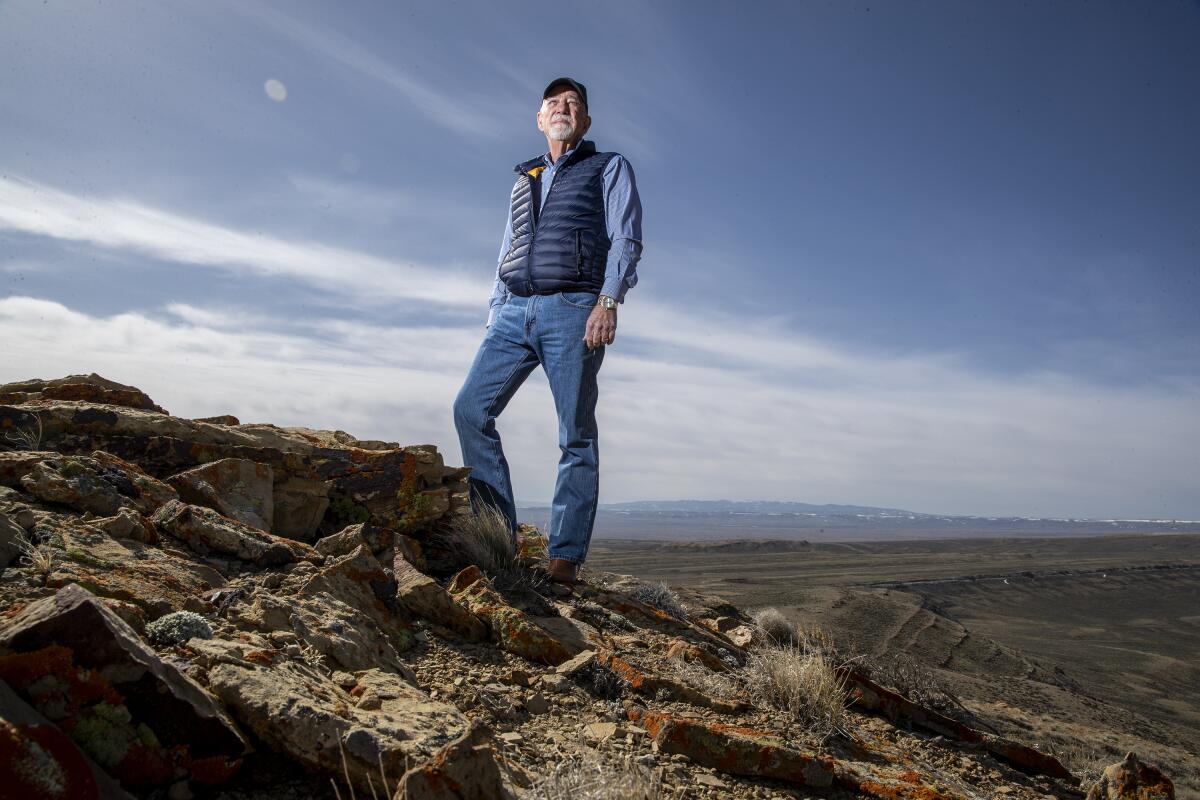
Federal officials have approved construction of a 732-mile power line designed to bring wind energy from Wyoming to Southern California. Billionaire developer Phil Anschutz expects to start building the TransWest Express line before the end of the year, Jason Plautz reports for E&E News, although Anschutz still doesn’t have a customer signed up for the thousands of megawatts of wind power he’s building at the far end of the line. For background on this project, check out my in-depth story from last year, for which I traveled the transmission-line route with a photographer and video crew. Also see this excellent piece by Catherine Clifford for CNBC, about the difficulties that renewable energy developers across the country have faced hooking up to an electric grid that’s not designed to handle all the solar panels, wind turbines and batteries we’re going to need.
County commissioners in Nevada have voted to rescind a permit for exploratory geothermal drilling in the Black Rock Desert, near the Burning Man festival site, after a public outcry. The Washoe County Commission’s 3-2 vote was a serious blow for geothermal developer Ormat Technologies, the Associated Press’ Scott Sonner reports — and for geothermal energy advocates more broadly. As I wrote last month, the technology could play a significant role in phasing out fossil fuels, because unlike solar panels and wind turbines, geothermal plants can produce climate-friendly energy around the clock. But in Nevada and other parts of the West, opposition is bubbling to the surface as more projects get proposed.
A bill pushed through the California Legislature by Gov. Gavin Newsom last year requires utilities to start charging a fixed monthly fee based on income. The fee will apply to customers of Southern California Edison, Pacific Gas & Electric and San Diego Gas & Electric. But how much should low-income families pay versus wealthier households? The San Diego Union-Tribune’s Rob Nikolewski explained the proposals being considered by the Public Utilities Commission and explored how homes with rooftop solar might be affected. Speaking of which, the utilities commission rejected an application from solar installer Sunnova to power newly built communities with clean energy microgrids. Details here from Emma Foehringer Merchant at Inside Climate News.
POLITICAL CLIMATE
Under pollution rules proposed by the Biden administration, two-thirds of new passenger car sales would likely be electric less than a decade from now. That would be a nearly tenfold increase over current electric vehicle sales, per Matthew Daly and Tom Krisher at the Associated Press. Persuading more Americans to ditch gasoline could be especially difficult given that federal tax credits for many electric models went away or were cut in half this week under new rules designed to punish automakers that build EVs — or source their parts — overseas. My colleague Russ Mitchell has the list of which all-electric and plug-in hybrid cars will still get you a full federal tax credit — and which ones fail the “made in America” test.
The environmental group Friends of the Earth is suing Pacific Gas & Electric to stop the company from keeping the Diablo Canyon nuclear plant open past 2025, saying PG&E would be violating a contractual obligation to shut it down. Gov. Newsom has argued that California needs the uranium-fueled reactors for at least a few more years, to help keep the lights on as the state navigates the tricky transition from fossil fuels to renewable energy. But PG&E previously agreed to close the nuclear plant, and Friends of the Earth intends to hold the company to that commitment, the Associated Press’ Michael R. Blood reports.
U.S. Sen. Martin Heinrich (D-N.M.) slammed New Mexico Gov. Michelle Lujan Grisham for vetoing a bunch of clean energy tax incentives, including financial support for electric cars, energy storage and geothermal power. Heinrich’s sharp criticism raises the question of whether he might run for governor in 2026, the Albuquerque Journal’s Dan Boyd writes. Also in the Land of Enchantment — and neighboring Arizona and Utah — the Navajo Nation says it will partner with clean energy developer Avangrid to build a gigawatt of solar, wind and battery storage. Here’s the story from the Albuquerque Journal’s Kevin Robinson-Avila.
AROUND THE WEST

The Pacific Flyway — a migratory bird route that stretches from Central America to the Arctic — continues to amaze. My colleague Louis Sahagún reports that avian researchers are studying a San Gabriel Mountains parking lot that has become an unusual pathway for birds passing through the towering peaks north of Los Angeles. So far, scientists aren’t exactly sure why as many as 13,000 tanagers, orioles, buntings, grosbeaks and warblers pass through each day. In other bird news, Vox’s Benji Jones has a fascinating story on burrowing owls in California’s Imperial Valley. Despite having spent a lot of time in Imperial, I had no idea it’s got one of the highest concentrations of burrowing owls in North America — with irrigation canals to thank.
Montana Republicans are hurrying to pass a bill banning regulation of carbon pollution, in hopes of getting around a court order blocking construction of a gas-fired power plant. The bill would benefit NorthWestern Energy, a multistate electric company that has seen its plans for a new gas plant temporarily thwarted, Tom Lutey reports for the Billings Gazette. Elsewhere in Montana, Lee Enterprises’ Ted McDermott has a great deep dive into the economic and political forces that have helped sustain a major Western coal plant — at least so far — despite efforts by coastal lawmakers to get the thing shut down.
An undersea oil pipeline that sprang a big leak off the Southern California coast 18 months ago is being restarted. Details here from The Times’ Laura Nelson, who writes that the San Pedro Bay pipeline “sent at least 25,000 gallons of crude gushing into the waters off Huntington Beach in October 2021, oiling birds and other wildlife and forcing a weeklong closure of beaches.”
ONE MORE THING
Climate change has caused more than 500 additional home runs across Major League Baseball since 2010, according to science.
More specifically, that’s according to a new study from Dartmouth researchers, as described by the Washington Post’s Kasha Patel. It’s no secret that baseballs fly father in warm air, so it’s not surprising to see more homers as the planet warms. And in the grand scheme of things, 500 long balls over a dozen years isn’t a lot — just 1% of all dingers over that time period.
But if this study prompts some baseball fans to sit up and pay attention to the climate crisis, I’ll take it.
And if Max Muncy launches even more moonshots into San Francisco Bay, continuing to frustrate Giants fans? Even better.
We’ll be back in your inbox on Thursday. To view this newsletter in your Web browser, click here. And for more climate and environment news, follow @Sammy_Roth on Twitter.
Toward a more sustainable California
Get Boiling Point, our newsletter exploring climate change, energy and the environment, and become part of the conversation — and the solution.
You may occasionally receive promotional content from the Los Angeles Times.




